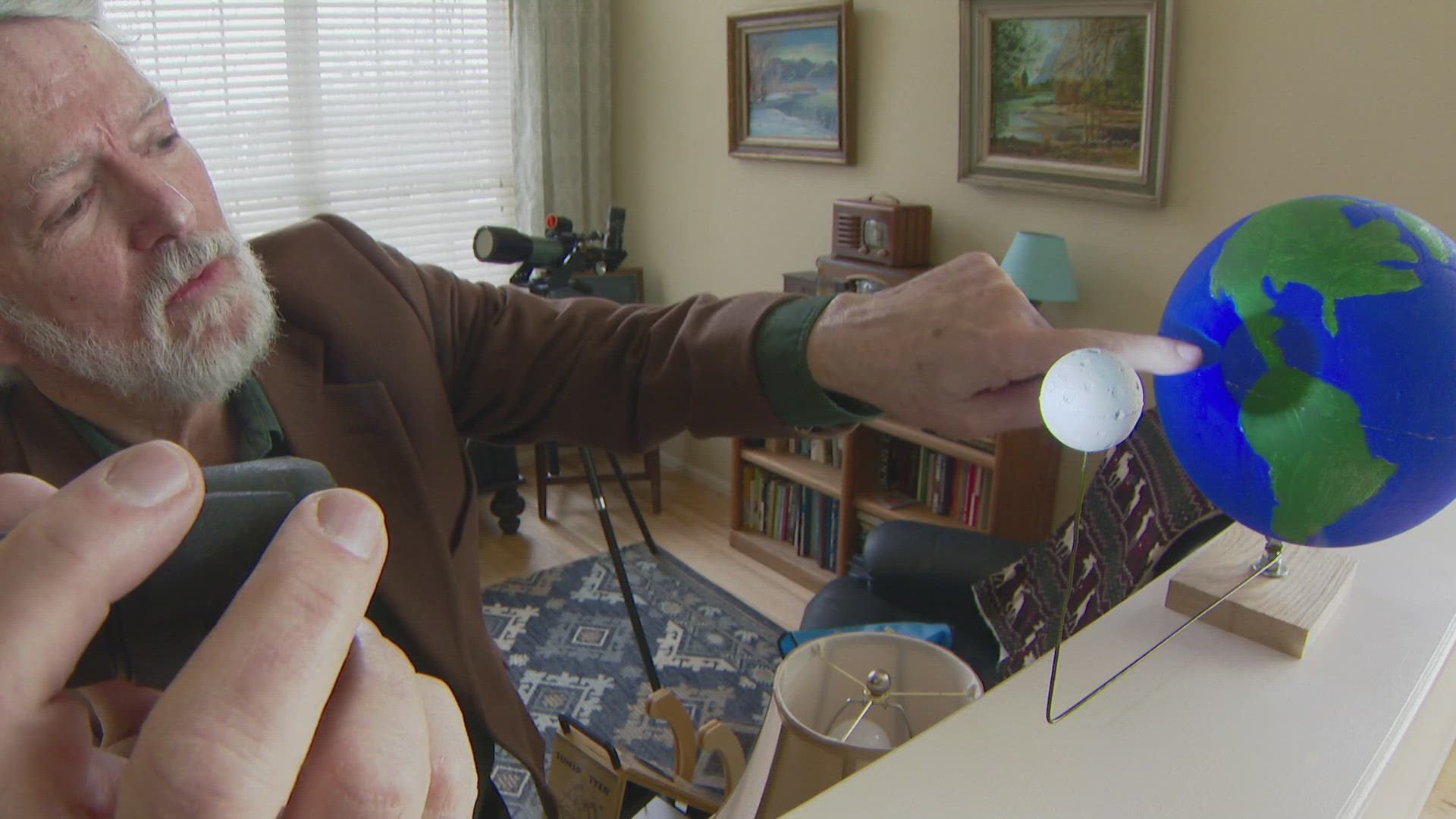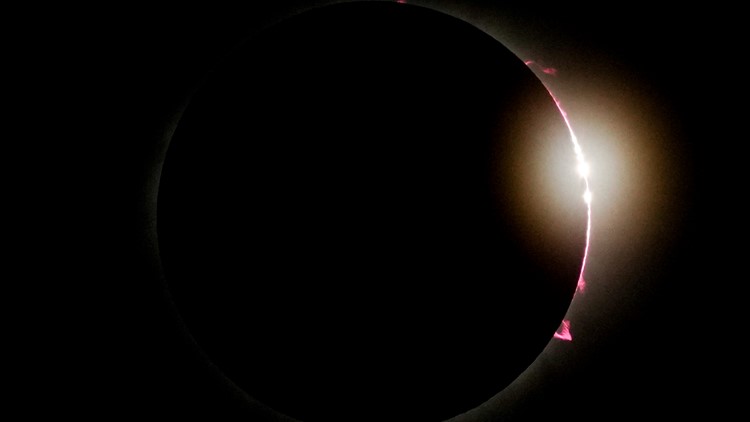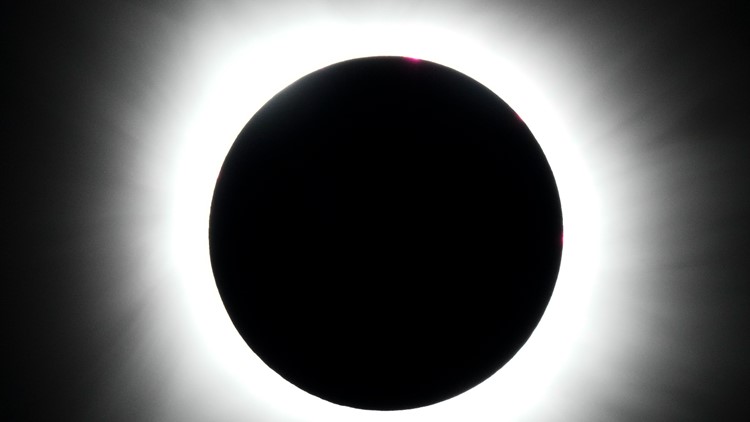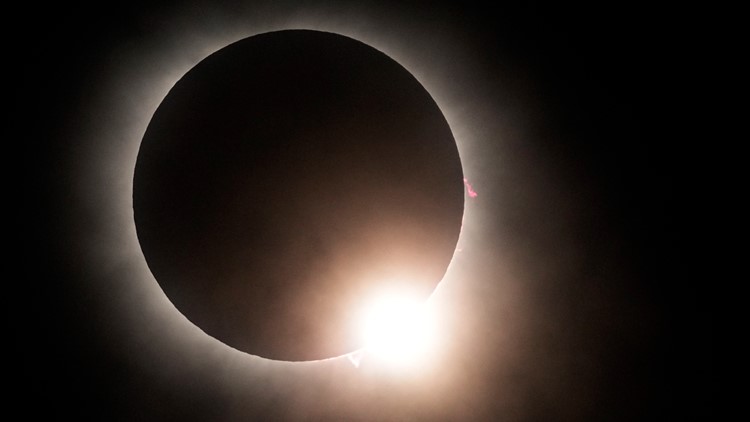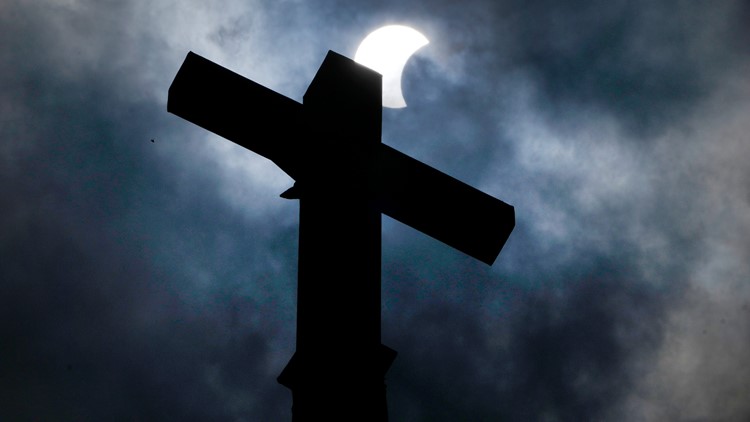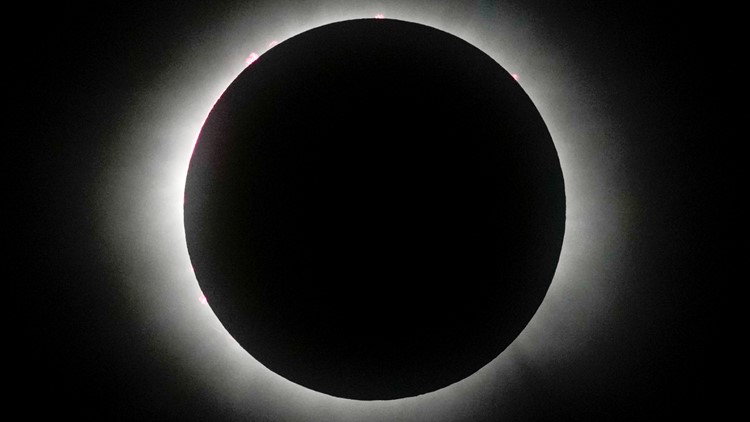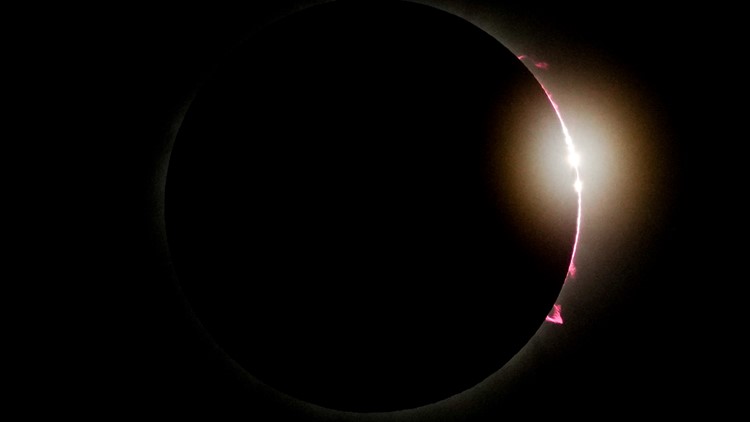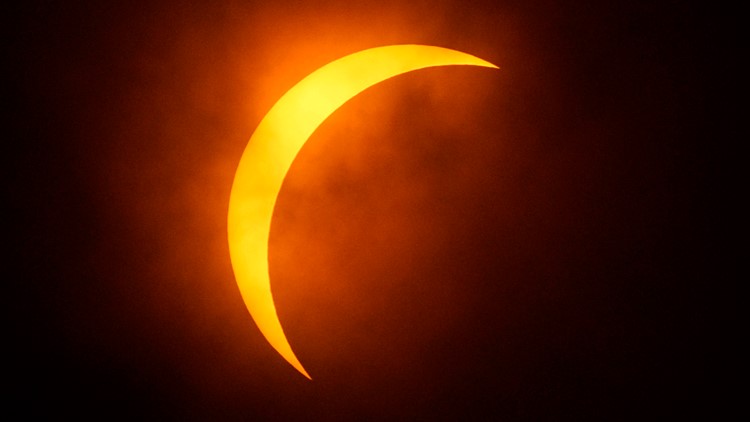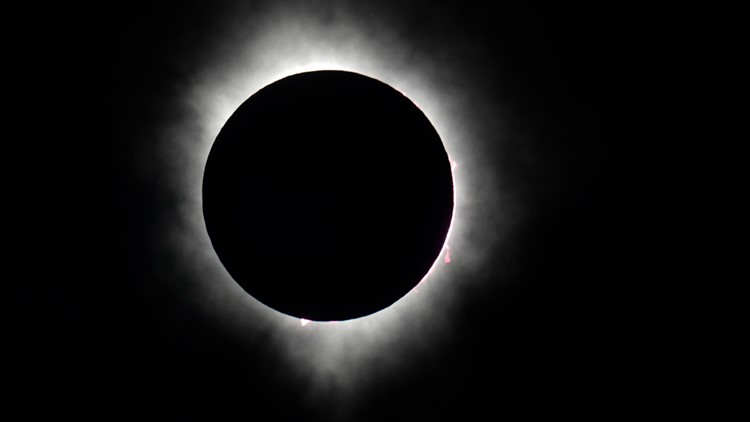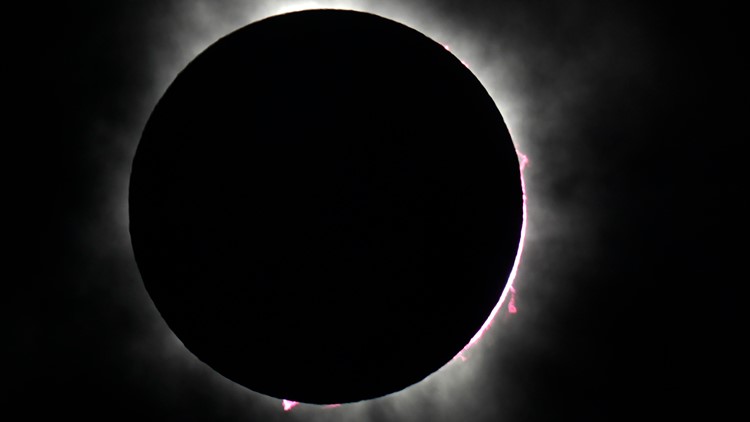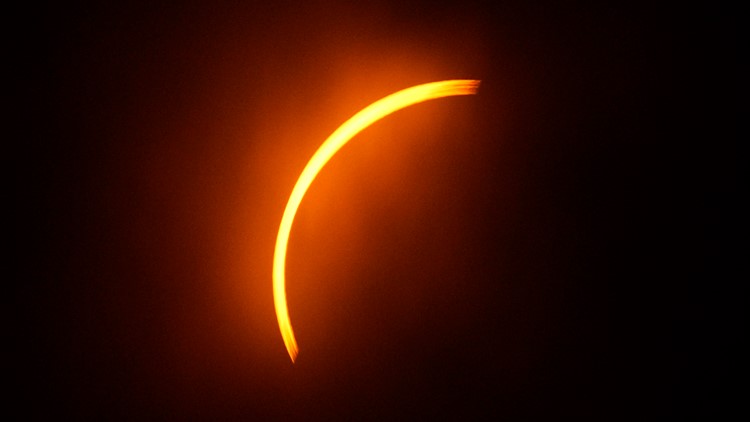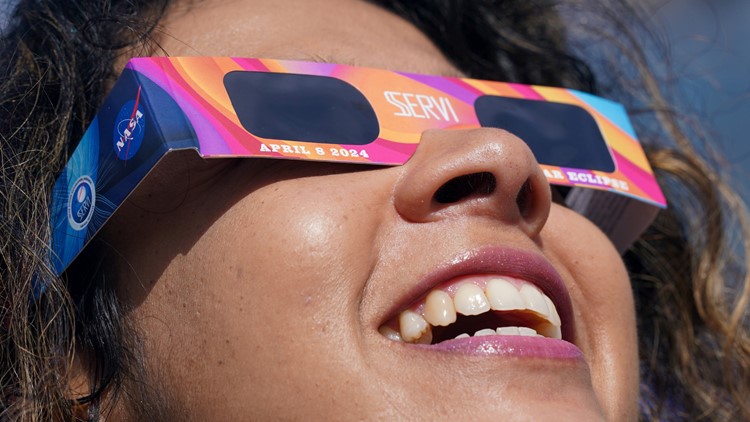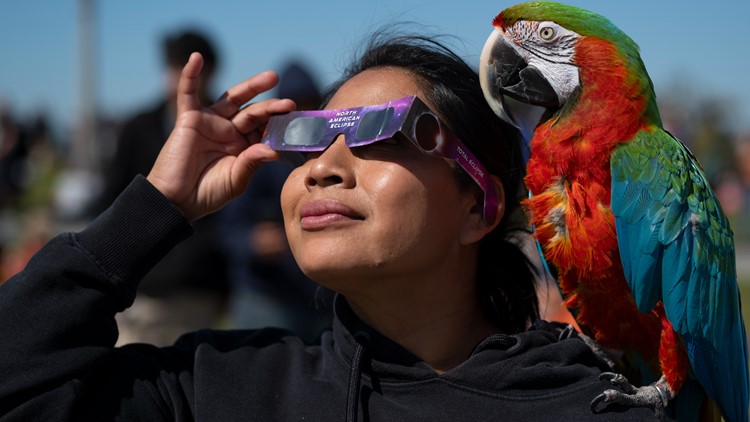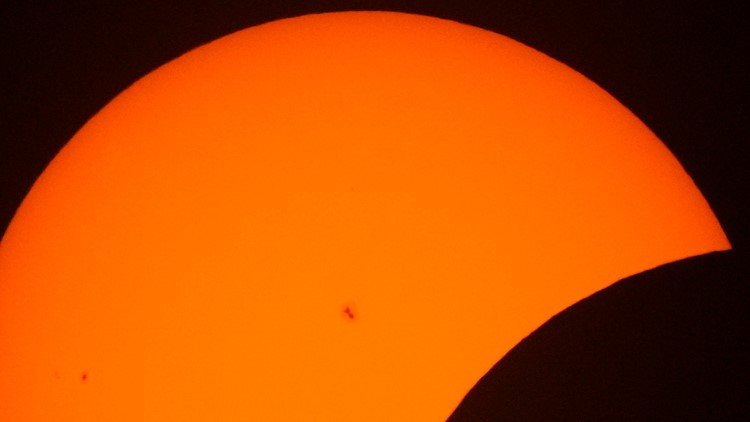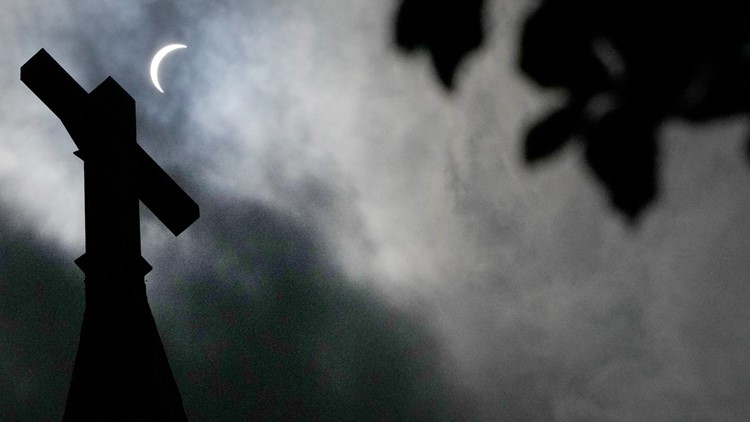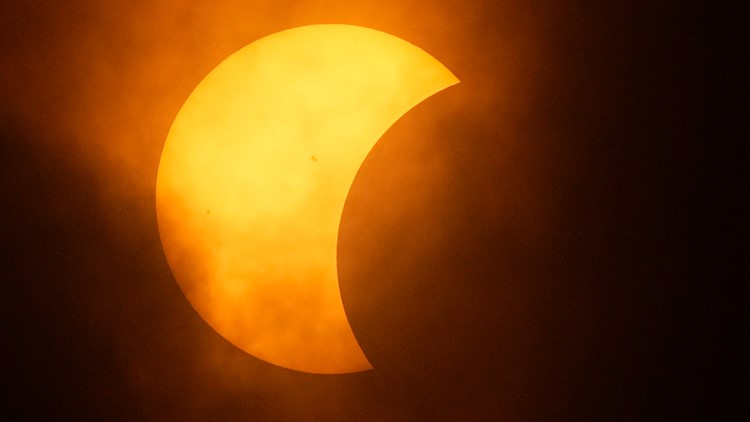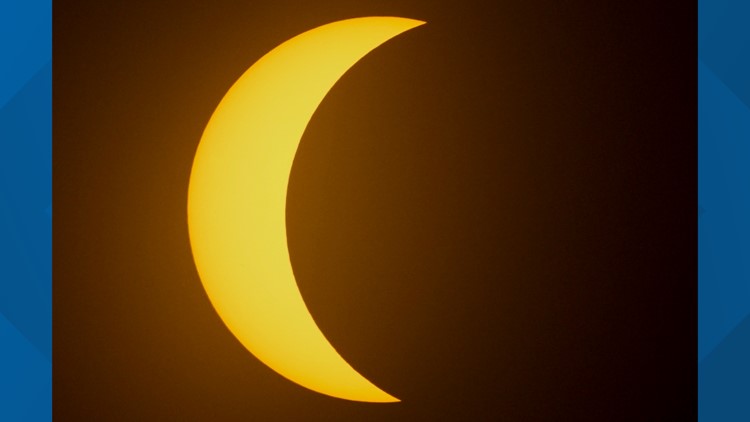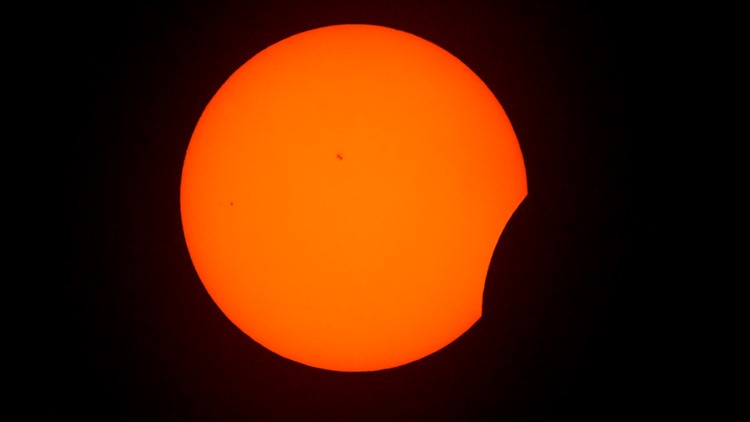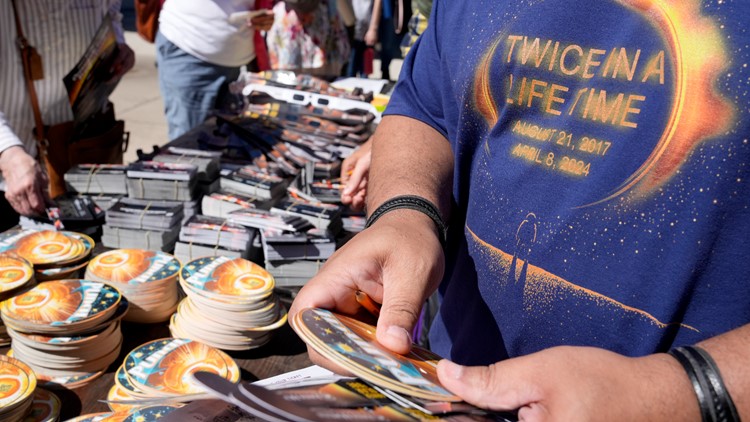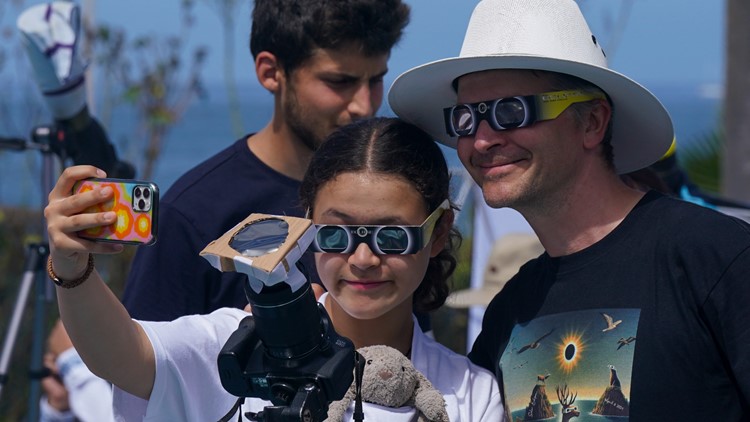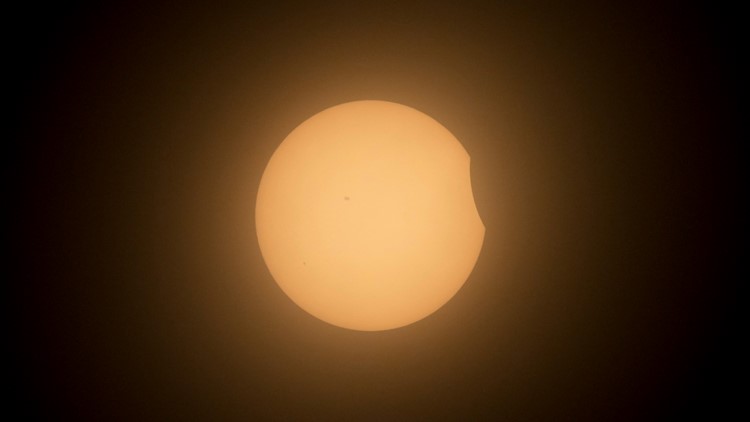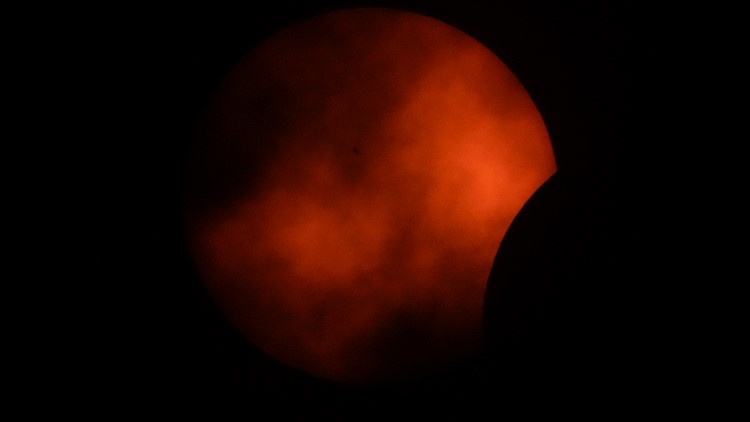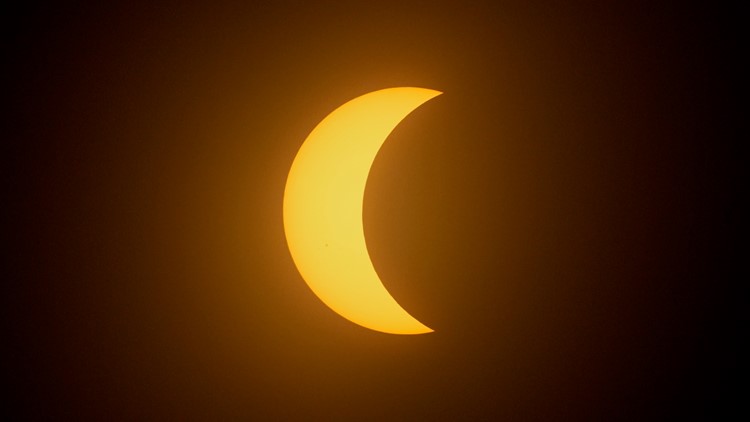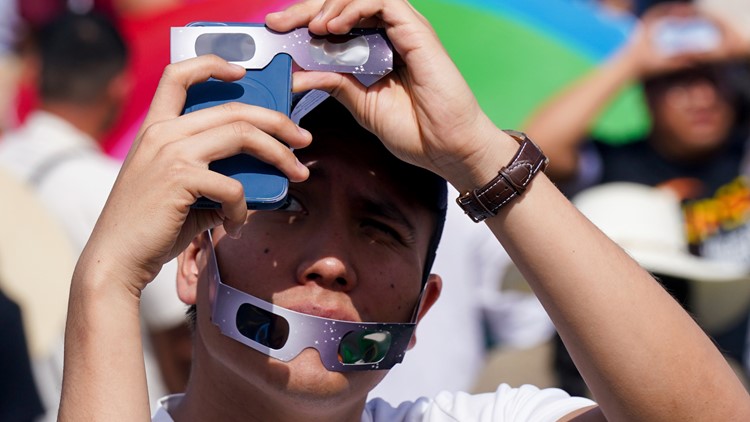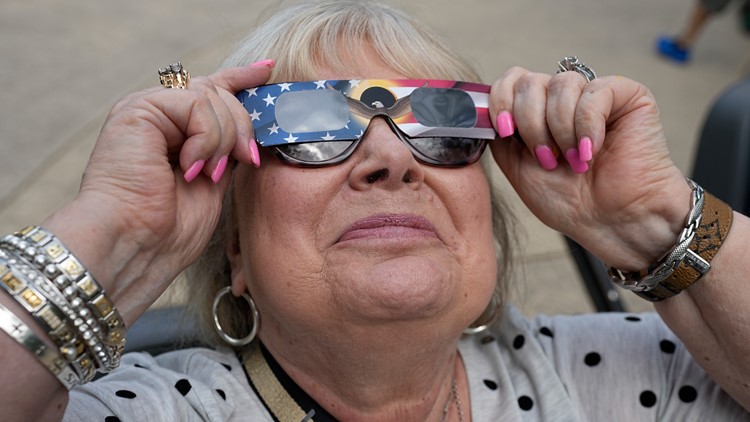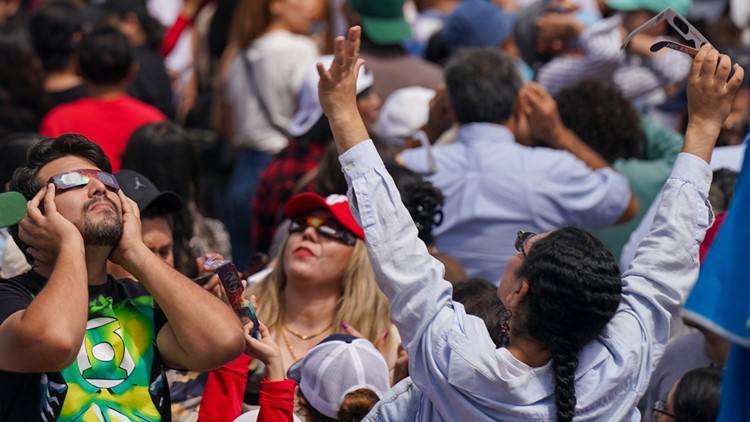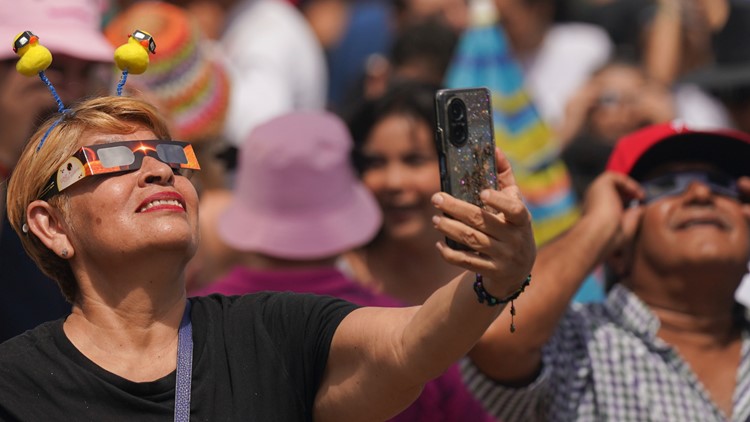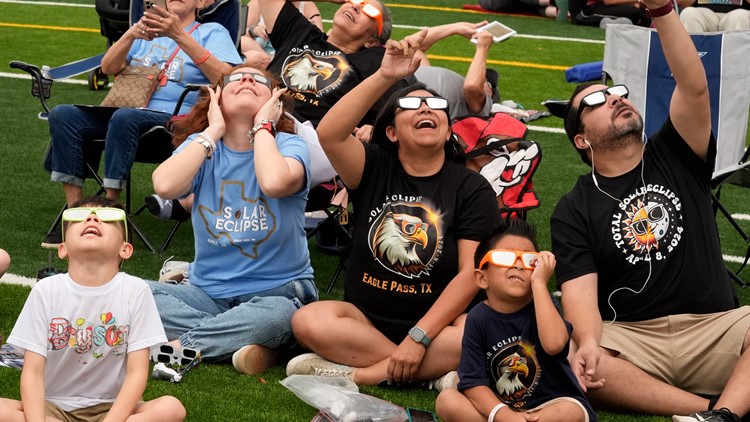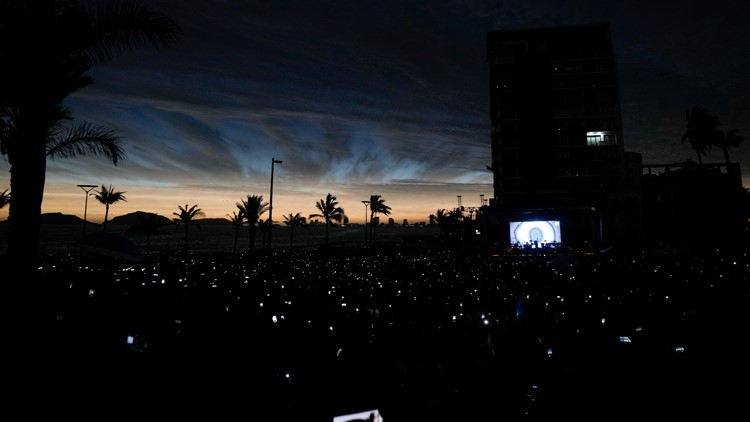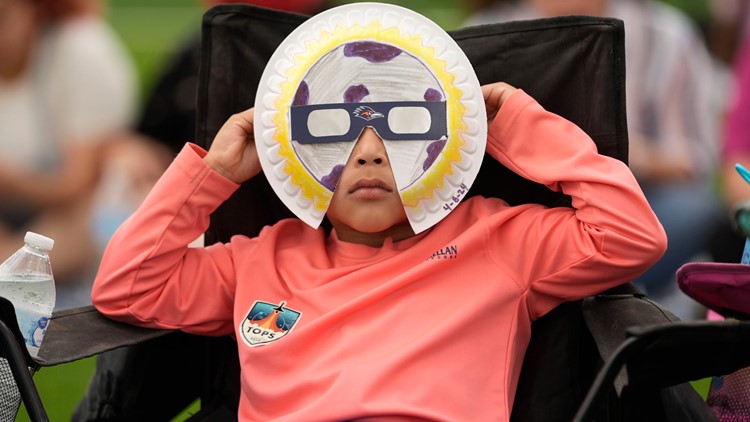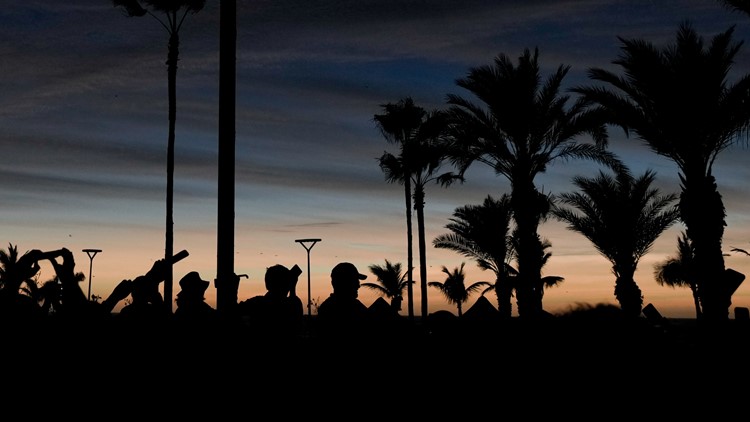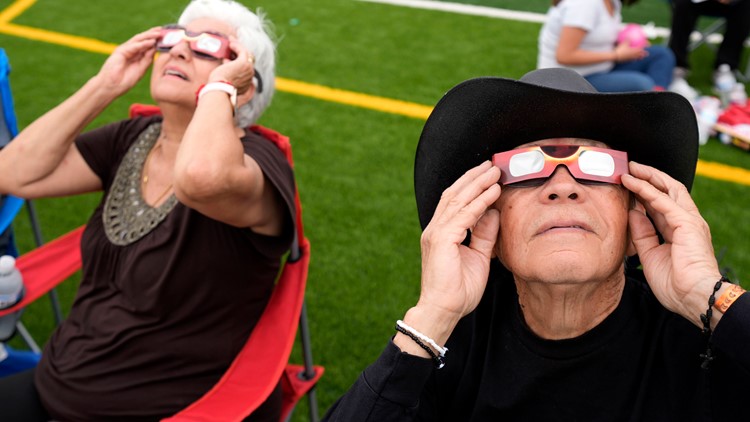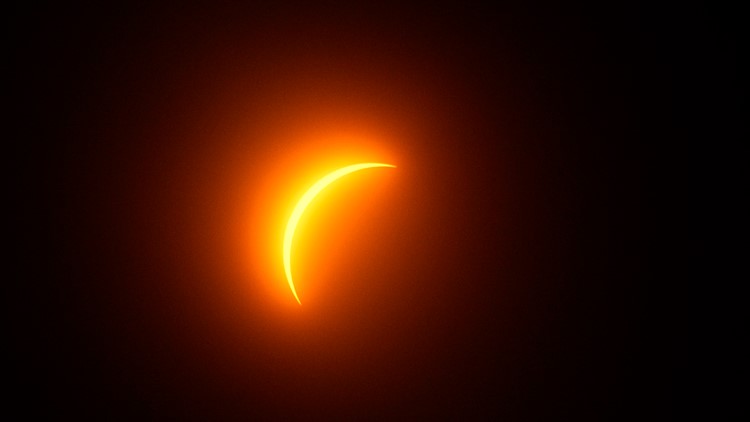DENVER — As millions of spectators await the total solar eclipse from Mexico to the United States and Canada, clouds and weather might impact the view.
Monday's celestial sensation, which will occur between 11:28 a.m. MT and 1:53 p.m. MT, could be obscured as some forecasters call for clouds.
The sky could be covered by clouds for portions of the direct eclipse path in Texas, Indiana, Ohio and New York. The best weather was expected at the tail end of the eclipse in Vermont and Maine, as well as New Brunswick and Newfoundland.
“Cloud cover is one of the trickier things to forecast,” said National Weather Service meteorologist Alexa Maines at Cleveland's Great Lakes Science Center on Sunday. “At the very least, it won’t snow.”

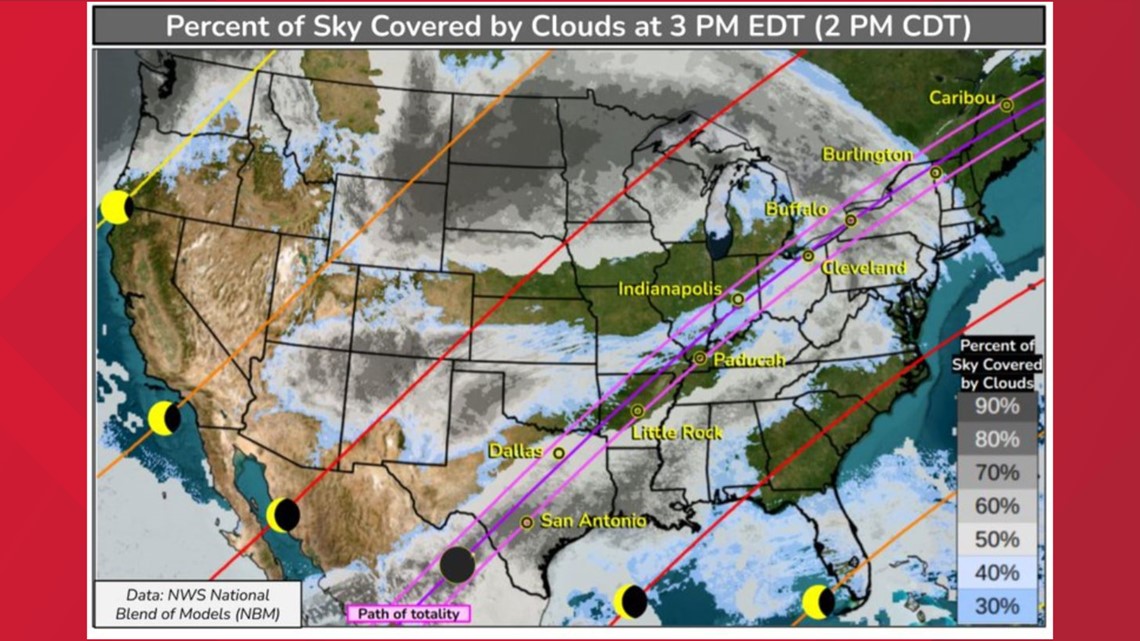
Will the clouds cover the eclipse in Colorado?
The National Weather Service in Boulder released a forecast of where clouds are expected Monday in Colorado.
In Colorado, the southern and western parts of the state are forecast to see the most cloud cover. Northeast Colorado looks to have the best view of Monday's eclipse with clear skies forecasted.
"Northeastern Colorado looks like a great place to catch a glimpse!" the National Weather Service said.

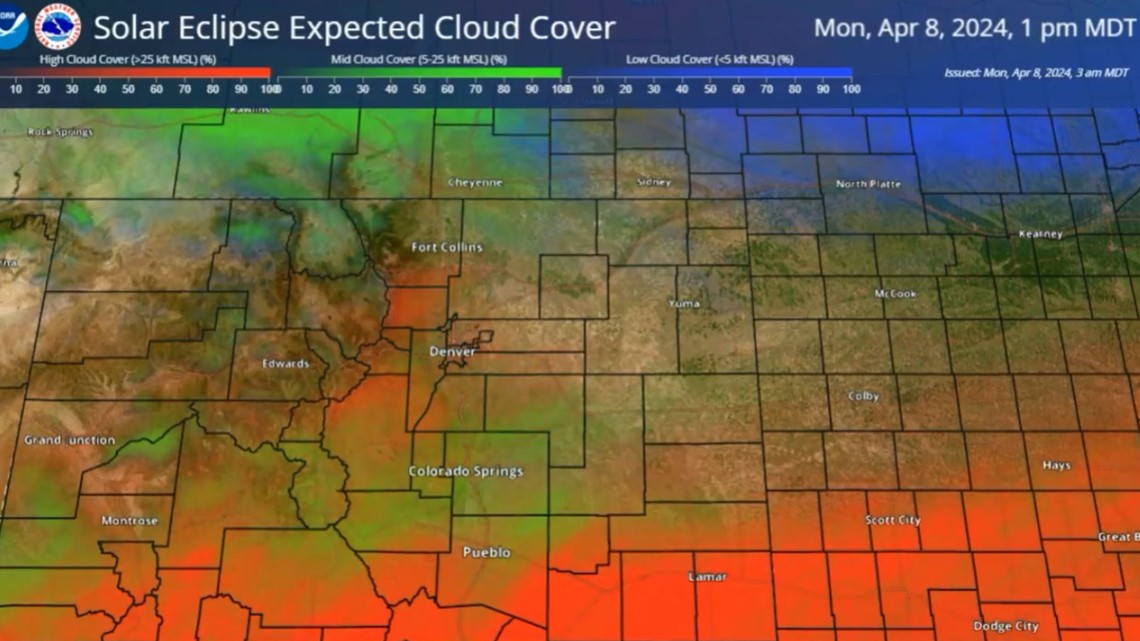
The path of the total solar eclipse will cross North America, passing over Mexico, the United States, and Canada. In certain areas, the sky will darken as if it were dawn or dusk, as the moon moves in front of the sun.
The out-of-sync darkness lasts up to 4 minutes, 28 seconds, almost twice as long as it was during the U.S. coast-to-coast eclipse seven years ago because the moon is closer to Earth.
It will be another 21 years before the U.S. sees another total solar eclipse on this scale.
> Watch below: Total solar eclipse moves across North America
PHOTOS: Total Solar Eclipse 2024
When is the total solar eclipse?
The total solar eclipse will occur on Monday, April 8, 2024.
Colorado will see a partial solar eclipse, roughly between 11:30 a.m. and 1:30 p.m. mountain time, with a max partial eclipse around 12:30 p.m. MT.
What will Colorado see during the eclipse?
Depending on where you are in Colorado, you will see a 54% to 78% solar eclipse.
The southeast corner of Colorado will see the greatest amount of totality with Springfield, Holly and Lamar seeing about 75% totality during the solar eclipse.
The northwest part of Colorado, including Grand Junction, Dinosaur, Craig and Steamboat Springs will see less than 60% totality on April 8.
Denver will reach 65% totality during the solar eclipse. The partial eclipse will begin in Denver at 11:28 a.m. MT and end at 1:53 p.m. MT with the max eclipse at 12:40 p.m. MT at 65% totality. The partial eclipse will last two hours, 25 minutes in Denver.
Solar eclipse totality in Colorado
- Springfield - 76%
- Lamar - 74%
- Trinidad - 72%
- La Junta - 72%
- Limon - 69%
- Alamosa - 68%
- Colorado Springs - 67%
- Denver - 65%
- Durango - 64%
- Boulder - 63%
- Greeley - 63%
- Leadville - 63%
- Fort Collins - 62%
- Grand Junction - 59%
- Steamboat Springs - 59%

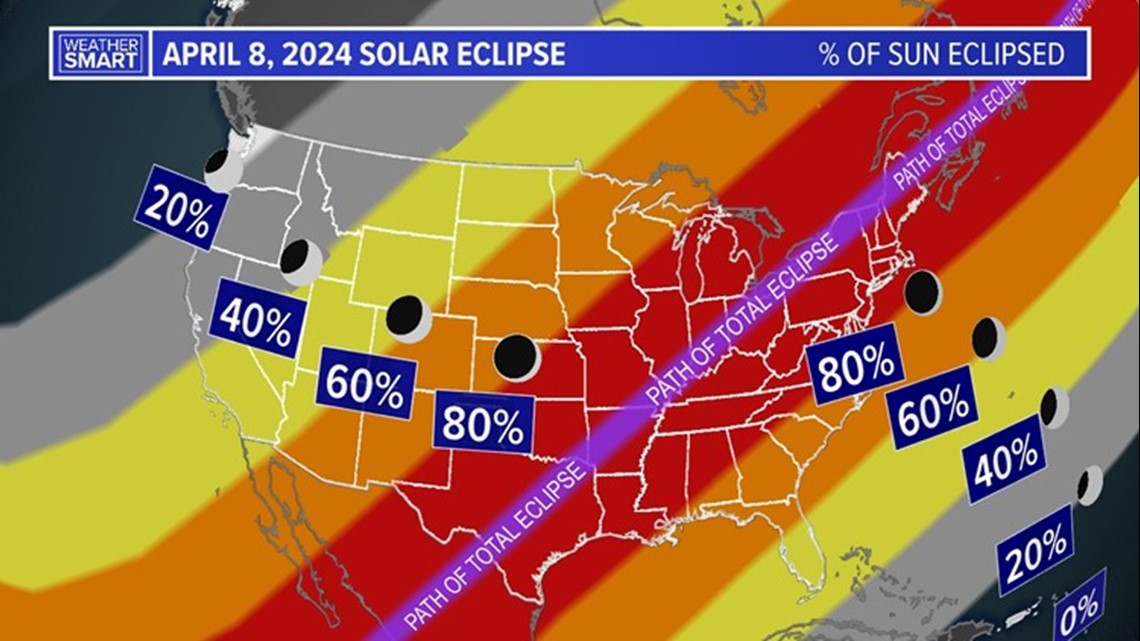
Where will the total eclipse be visible?
All 48 contiguous states on that date will experience at least a partial solar eclipse.
The path of totality will reach communities from Texas to Maine. Durations longer than 4 minutes will stretch from Texas as far north as Economy, Indiana, according to NASA.
According to NASA, an estimated 31.6 million people live in the path of totality this year, compared to 12 million in the path of the 2017 eclipse. Totality in April's eclipse will also last longer than it did in 2017.
In 2024, the maximum totality will last up to 4 minutes, 28 seconds, in an area about 25 minutes northwest of Torreón, Mexico. The longest period of totality in 2017 was near Carbondale, Illinois, at 2 minutes, 42 seconds.
Do I need to wear eclipse glasses?
For anyone who plans to view the eclipse, you must have properly certified solar glasses to do so safely.
Even though its a partial eclipse in Colorado, you still must wear properly certified solar glasses.
American Paper Optics CEO John Jerit said you should look for the International Organization for Standardization, ISO, emblem on glasses and packaging.
"The glasses are well constructed and manufactured and the lenses are tested and certified so that the lenses block out the correct amount of ultraviolet and intense visible light," said Jerit.
Jerit also said to avoid buying from foreign importers who may offer their glasses at a better cost.
There are many online resources and maps to figure out how long the eclipse will last near you. The National Solar Observatory and Eclipse2024.org offer precise timings and simulations.
SUGGESTED VIDEOS: Total solar eclipse
> Top stories curated daily just for you! Sign up for the 9NEWSLETTER to get can’t-miss stories, Next and Broncos content, weather and more delivered right to your inbox.
MORE WAYS TO GET 9NEWS
Subscribe to our daily 9NEWSLETTER
Download the 9NEWS APP
iTunes: http://on9news.tv/itunes
Google Play: http://on9news.tv/1lWnC5n
HOW TO ADD THE 9NEWS APP TO YOUR STREAMING DEVICE
ROKU: add the channel from the ROKU store or by searching for KUSA.
For both Apple TV and Fire TV, search for "9news" to find the free app to add to your account. Another option for Fire TV is to have the app delivered directly to your Fire TV through Amazon.

